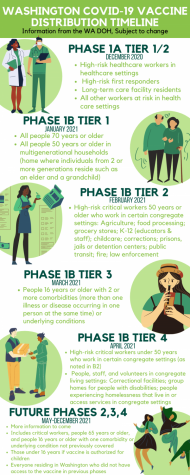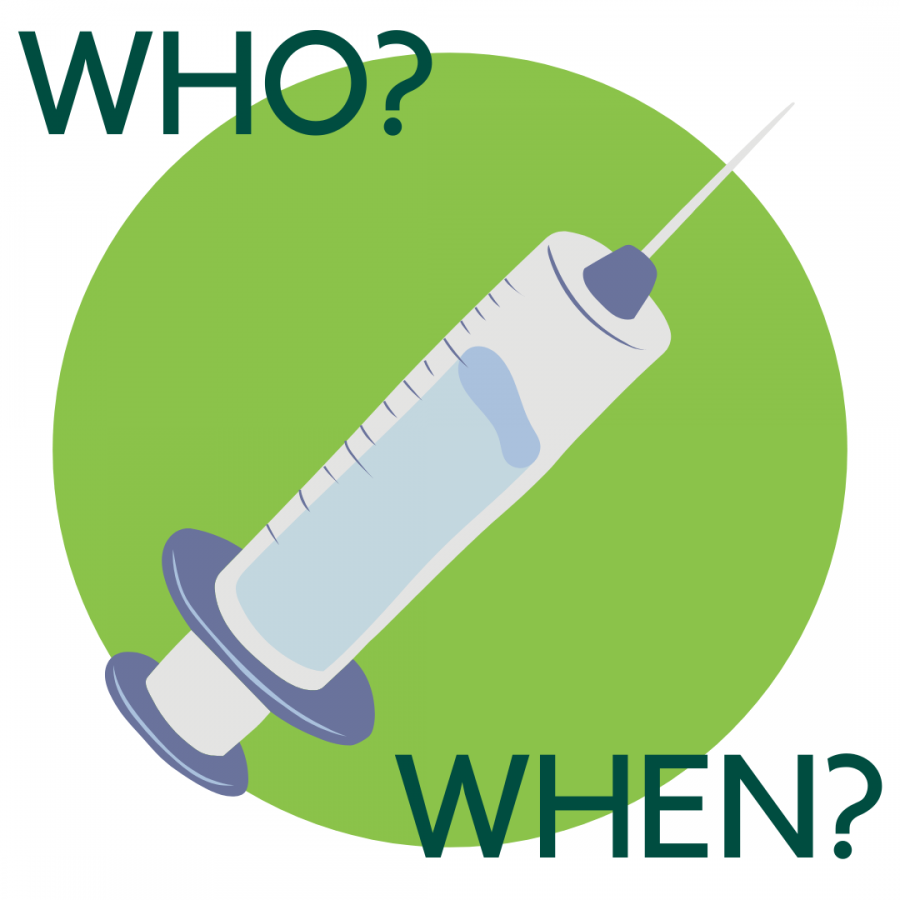Understanding the COVID-19 Vaccine
The science and timing of the Pfizer and Moderna treatments.
COVID-19 mRNA vaccines such as the ModernaTX and Pfizer-BioNTech vaccines are finally available to the American public. According to the Washington State Department of Health, 522,550 doses of the vaccine have been allocated to Washington state, and 425,900 have been delivered as of January 5th.
But increased access yields new questions: How do these new mRNA vaccines work? Are they safe? And when will different groups receive the vaccine?
Other more well-known vaccines, such as the flu shot, put a weakened or inactive strain of the virus into the body. This teaches the immune system how to recognize and mount an immune response against the virus.
The Pfizer and Moderna vaccines use messenger RNA (mRNA) because COVID-19 is an RNA virus. Although RNA and DNA both carry genetic information, they have differences in structure and function. DNA stores and transfers genetic information, while mRNA acts as a messenger to create proteins.
As a result, mRNA vaccines work differently from other vaccines. They teach our cells how to make a protein or piece of the virus, allowing the immune system to make antibodies against future infections of COVID-19.
According to the CDC, after the vaccine is administered into the upper arm muscle, the mRNA enters the muscle cells. From here, the cells use the instructions inside of the mRNA to produce a piece of a spike protein, which is found on the surface of the COVID-19 virus, but harmless to the body. The cell breaks down the mRNA after producing the protein piece.
Then, the cell displays the protein piece on its surface, allowing the immune system to recognize the foreign object and build an immune response. Through this process, the immune system learns how to protect against future infections.
Despite entering the cell, these mRNA vaccines do not affect the DNA as this mRNA never enters the nucleus, where DNA is stored.
The Pfizer and Moderna COVID-19 mRNA vaccines have been tested rigorously by the US Food and Drug Administration and are reported to be safe. In addition, the Pfizer vaccine was proven to be 95 percent effective at preventing COVID-19 in test patients without evidence of previous infections.
Research around mRNA vaccines isn’t new either. Scientists have studied mRNA vaccines for other diseases such as Ebola and Zika for decades. The vaccines do not contain any live viruses and will not make one sick with COVID-19.
Both the Pfizer and Moderna vaccines need to be administered in two shots: a priming dose and a booster shot. For Pfizer, the shots are 21 days apart; for Moderna, 28 days.
So when will we be vaccinated in Washington? Check out the infographic to see where you fall on the timeline.


Nhu is a senior at Garfield High School and Managing Editor of The Messenger. She is committed to accurately representing the diverse Garfield community...





